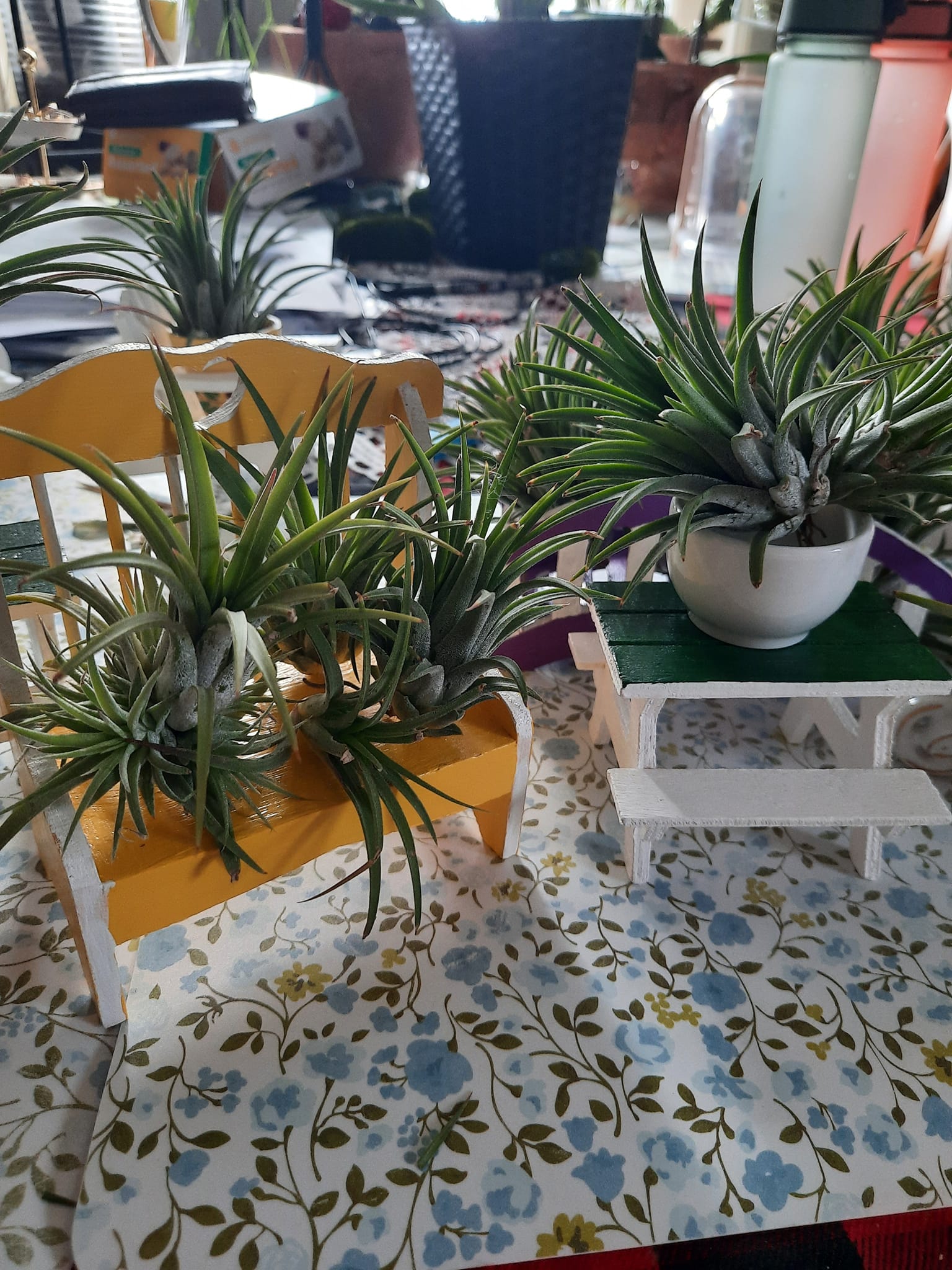
Air plants, with their quirky, low-maintenance nature, have surged in popularity. These unique green companions, known scientifically as Tillandsia, thrive without soil, making them an attractive option for busy plant enthusiasts. But how do you ensure that these little beauties not only survive but thrive? Here are six straightforward tips to elevate your air plant care game and extend its lifespan.
Introduction: Embracing the Air Plant Revolution

Air plants are the embodiment of botanical convenience. Unlike traditional houseplants, they don’t require pots or soil, relying instead on their leaves to absorb moisture and nutrients from the air. Their versatility allows them to be creatively displayed in terrariums, hanging arrangements, or even as part of artistic installations. However, their unconventional care needs can be a bit of a puzzle for new owners. Understanding the essentials of air plant care is crucial for keeping these green wonders healthy and vibrant. Let’s dive into six simple tips that will help you maximize the longevity of your air plants.
1. Master the Art of Watering
Understanding Water Requirements
Air plants have a different hydration routine compared to other plants. Instead of a consistent watering schedule, they thrive on a more sporadic approach. Here’s how you can perfect your watering technique:
- Soak Your Air Plants: Immerse your air plants in water for about 20-30 minutes once a week. This method ensures that the plants absorb adequate moisture.
- Draining is Crucial: After soaking, shake off excess water and allow the plants to dry completely before returning them to their display. This prevents water from collecting at the base of the leaves, which can lead to rot.
- Use Filtered Water: Tap water with high mineral content or chemicals can damage your plants. Opt for filtered water or rainwater for the best results.
Signs of Over or Under-Watering
- Over-Watering: Yellowing leaves and a soggy base are clear indicators that your plant is getting too much water.
- Under-Watering: Brown, dry leaf tips suggest that your plant needs more moisture.
2. Optimal Lighting Conditions
Finding the Right Spot
Air plants enjoy bright, indirect light. Too much direct sunlight can cause them to scorch, while too little light can stunt their growth. Here’s how to find the perfect balance:
- Bright, Indirect Light: Place your air plants near a window with filtered sunlight. East or north-facing windows are often ideal.
- Artificial Lighting: If natural light is limited, consider using fluorescent or LED grow lights to supplement.
Adapting to Seasonal Changes
- Summer: Increased daylight hours usually mean your plants will need more frequent watering.
- Winter: Reduced sunlight might require you to move your plants closer to a light source or adjust watering schedules.
3. Temperature and Humidity
Ideal Climate for Air Plants
Air plants prefer a climate similar to their native tropical environments. Here’s what they need:
- Temperature: Maintain temperatures between 50°F and 90°F (10°C to 32°C). Extreme cold or heat can be detrimental.
- Humidity: Air plants thrive in a humidity range of 50% to 80%. If your home is dry, especially in winter, consider placing a small humidifier nearby or occasionally misting your plants.
Avoiding Common Pitfalls
- Avoid Drafts: Keep your air plants away from drafty areas or air conditioners which can dry them out quickly.
- Stay Clear of Heating Vents: Direct heat can lead to dehydration and stress on your plants.
4. Proper Air Circulation
Why Airflow Matters
Good air circulation is vital for air plants. Without it, the moisture they absorb can stagnate and cause rot. To ensure proper airflow:
- Space Out Your Plants: Don’t crowd your air plants together. Provide enough space between them to allow air to circulate freely.
- Use Fans: If you live in a particularly humid area, a small fan can help maintain airflow and prevent moisture from settling on your plants.
Creative Display Ideas
- Hanging Terrariums: These allow for excellent air circulation and can be a beautiful addition to your decor.
- Wire Frames: Design custom displays using wire frames or driftwood to keep plants spaced out and visible.
5. Fertilizing with Care
When and How to Fertilize
Air plants are low feeders, meaning they don’t require frequent fertilization. However, occasional feeding can enhance their growth:
- Frequency: Feed your air plants once a month during the growing season (spring and summer). Reduce or stop fertilizing in the dormant months (fall and winter).
- Type of Fertilizer: Use a diluted, water-soluble fertilizer designed for bromeliads or air plants. Too much fertilizer can harm your plants.
Application Tips
- Dilution is Key: Always dilute the fertilizer to half strength or less to avoid overfeeding.
- Avoid Leaf Contact: Apply the fertilizer solution directly to the water when soaking, rather than spraying it on the leaves.
6. Repotting and Maintenance
When to Repot
Air plants generally do not need repotting, but there are situations where it might be necessary:
- Growth Outgrows Display: If your plant has outgrown its display, consider separating offsets or providing a new arrangement.
- Signs of Trouble: If your plant shows signs of decay or damage, it might be time to assess its placement and health.
General Maintenance Tips
- Cleaning: Gently rinse your air plants in water to remove dust or debris. Avoid using soaps or chemicals.
- Inspect Regularly: Check your plants periodically for pests or diseases, and address any issues promptly.
Conclusion: Nurturing Your Air Plant Journey
Caring for air plants can be an incredibly rewarding experience. By mastering these six simple care tips—proper watering, optimal lighting, temperature and humidity control, ensuring airflow, careful fertilization, and occasional maintenance—you can help your air plants not just survive, but truly thrive.
As you embrace these botanical companions, remember that each plant is a unique creation with its own needs and personality. With a bit of attention and love, your air plants will reward you with their striking presence and resilience.
